

Suunto Blog
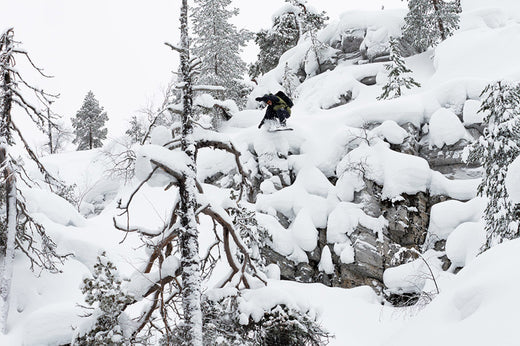
Arctic Lines with Antti Autti
New season, new adventures: Antti Autti continues his search of epic, unique and unridden lines in the frigid reaches of the Nordic north.
Arctic Lines is already in its fourth season! Get a sneak peek of the upcoming episodes in the season trailer, featuring Antti and his crew—including Jeremy Jones, Elena Hight, Tailer Gray Spinney, Miikka Hast and Fredrik Aspö. The series is filmed by Jaakko Posti, Markus Kumpula and Mikko-Pekka Karlin. Mikko-Pekka also edits the videos.
Freeride snowboarding in Finnish Lapland
In the first Arctic Lines episode of the new season, Antti Autti invites you to explore the incredible freeriding opportunities near his hometown of Rovaniemi, Finland, located right on the Arctic Circle.
Join him on a journey through the breathtaking landscapes of Finnish Lapland, featuring nearby fells, national parks, and boulder fields—hidden gems for freeriding adventures when the conditions are just right.
Exploring the untouched freeriding terrain of Nuvsvåg, Norway
In the second episode of the Arctic Lines season, Antti and his crew discover some of the most pristine freeriding lines we've ever seen—perfect snow, great access straight from the road, and a touch of problem-solving to make it all the more rewarding. Enjoy!
Stay tuned for the third episode of the Arctic Lines season!
Lead image by Simo Vilhunen
More content with Antti Autti
How to use avalanche terrain maps
8 steps for planning trips in the mountains
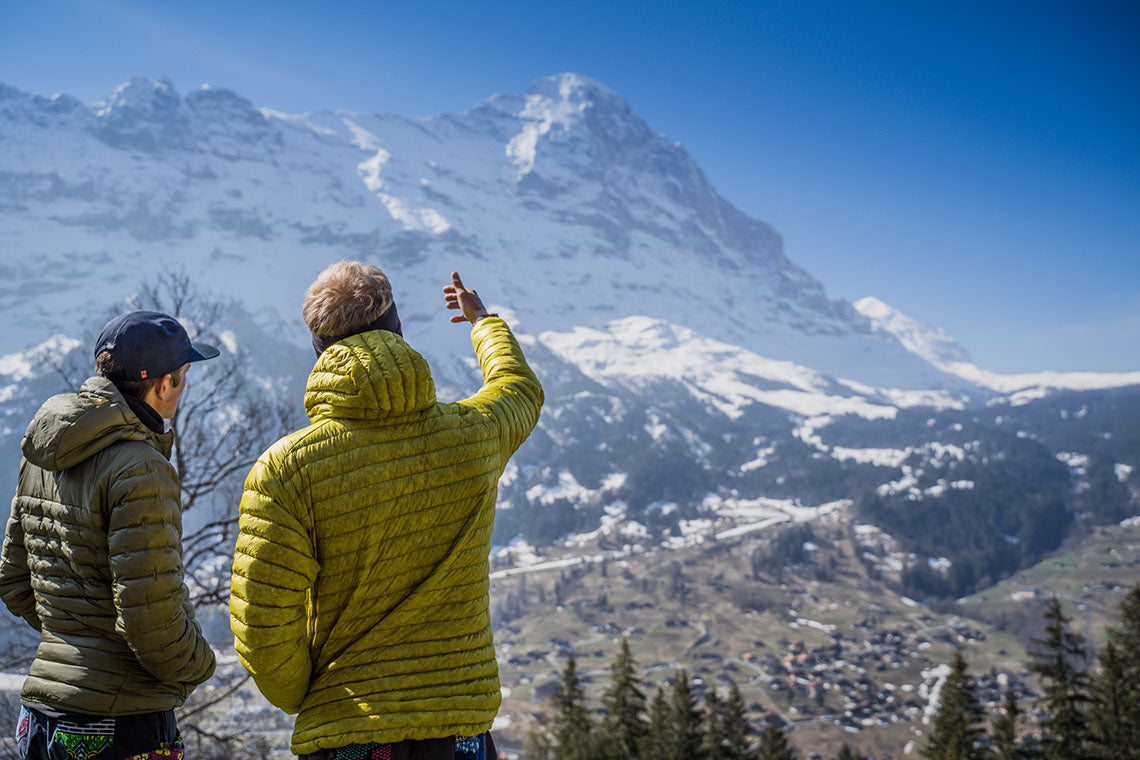
From Bikes to Peaks: The Historic Quest of Bike2Eiger
Join Suunto ambassador Philipp Reiter and his friend Martin Schidlowski as they retrace a historic journey to the Eiger North Face in their film, Bike2Eiger.
Suunto ambassador Philipp Reiter invited his childhood friend and climber Martin Schidlowski on an adventure that combined history with the modern-day challenges of mountaineering. Riding 600 km from their home in Berchtesgadener Land, Germany, to Grindelwald, the base of the Eiger in Switzerland, and attempting to climb its notorious north face was merely the backdrop for something more meaningful and thought-provoking.
We caught up with Philipp to discuss his film, Bike2Eiger. The film has been touring mountain film festivals for the past winter and is now released online. Read on – and watch the film below!
Philipp Reiter and Martin Schidlowski are friends since childhood.
You were following in the footsteps of some true Alpinist legends. Who were they and what was their story?
Anderl Hinterstoisser and Toni Kurz were two alpinists from the Berchtesgadener Land, where Martin and I also grew up. In the 1930s, they wanted to solve the last unclimbed problem of the Alps - the Eiger North Face. As they had no money to travel by train, they went from Bad Reichenhall to Grindelwald by bike. (Read more about them here.)
What is your connection with your adventure buddy Martin?
Martin Schidlowski is my kindergarten buddy. We have done many alpine adventures together, running, climbing, and mountaineering. Since the beginning, we have had the same mindset and passion for the mountains. He is a super good climber and alpinist, and I am more of the endurance athlete in our team.
Not the conditions the duo was hoping for.
The adventure started with three long days in the saddle. How did that go?
Haha, not very well! 1.5 hours after we started, we were stuck and had to push the bikes through 30–40 cm of fresh snow. Generally, it was super cold, and we underestimated the weight of the bags. We carried in all our gear – alpinism by fair means. The first night, the police also kicked us out of our little wood cabin as in Austria sleeping somewhere out counts as illegal camping.
Did you start to question why you didn’t simply drive to the mountain?
We wanted to experience the same as the two pioneers in the 1930s, which is why we also took the bikes.
Studying the route and the weather are part of any adventure.
Do you think Martin will ever again go on a bikepacking trip?
No, never! He had never ridden more than 100 km before, and on day one we had to do around 220 km! He did not like it.
And what about you…?
Well, generally, I like cycling a lot as to me it’s the perfect way to explore new areas at a decent speed. But on this ride, my leg warmers were too tight, and I got an inflammation around the knee, which was super painful.
First attempt on the Eiger: too much snow.
The weather conditions and the amount of snow made the first Eiger attempt hard. Is there anything you could have done differently?
At one point, there were just too many people with busy schedules involved in the project, and we couldn’t keep shifting the dates all the time. So, we had only a few time slots planned, and basically, only this one was left. That’s why we started in okay conditions, knowing that it might become too tricky to climb the face. And then there was too much snow.
Mountaineering has a lot to do with conditions. Usually, you need to be patient and wait for the right conditions. It’s never a good idea to rush it in the mountains.
Before the second attempt, the atmosphere was different. Can you explain a bit about what was happening?
When we came back one year later for the second try, we knew that the conditions were very good and that it was just a matter of us making it happen. Also, we didn’t do the bike approach again, which made it easier. When we went up to Eigergletscher to sleep, there was so much positive energy. I remember this situation well.
Second try, better conditions – but different route.
Could part of the mood be that you were so sure that with the right timing and team, you could just show up and finish the project?
Yes, exactly. It was almost like: We just need to climb it now, and that’s it!
Is it possible that the slower approach and early difficulties set you up differently?
Martin and I had done some more training together, like the Matterhorn North Face. We felt more ready than the first time and were more relaxed as we did not have heavy legs from three long days of riding.
Summit of the Eiger!
Did the adventure teach you something?
Most of the time, things come out very differently than we have planned, and we always need to keep the capacity to adapt.
Watch now: Bike to Eiger
Watch now: Philipp Reiter and Martin Schidlowski follow the footsteps of their local mountaineering heroes from the 1930s on a multisport adventure to the "Eigernordwand“.
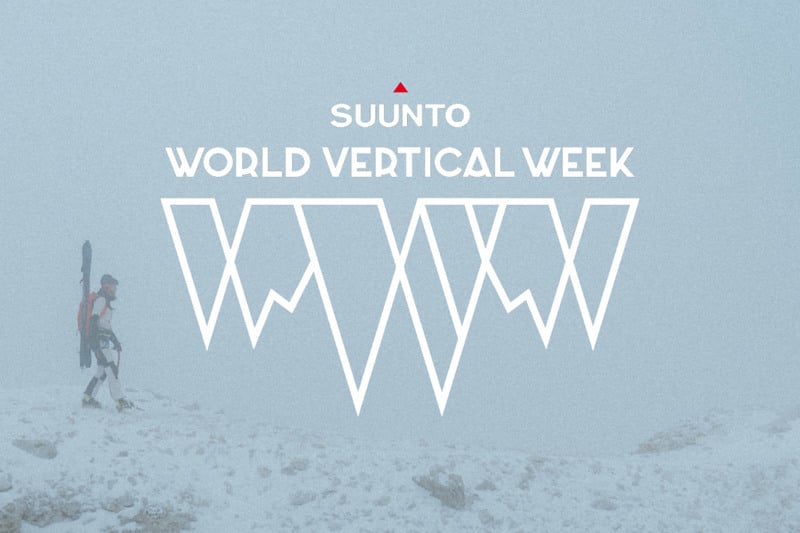
Italy dominates the Vertical Week 2024
Suunto World Vertical Week, the thrilling celebration of the uphill challenge, united outdoor enthusiasts from around the globe in a collective pursuit of elevation gain on March 18–24. All human-powered activities by the participants were counted and every hill was turned into an opportunity to conquer new heights.
We have now analyzed the data to see which country and activity type climbed the most!
The usual suspects were on top of the country rankings
In the country rankings, the usual suspects – countries in the mountainous regions of Europe – were once again on top. This time Italy dethroned Austria for the number one spot with over 400 meters of ascent per activity on average. Switzerland also broke its way to the top three.
The only non-European nation in the top 10 was South Africa in ninth place. Greece made it to the top 10 for the first time.
Average ascent meters by country
When looking at the total ascent, meaning adding up the ascent in all the activities in a nation for the Vertical Week, France took the top spot from Spain and Italy climbed past Austria on the third spot.
Top 10 for total ascent meters
France
Spain
Italy
Austria
Germany
Switzerland
USA
Poland
United Kingdom
Czech Republic
Skiers – and the Japanese trail runners – were above the rest
In the activity type rankings, there weren’t any major changes: ski touring activities had the biggest average ascent, followed by mountaineering and trail running. The average ascent for all the ski touring activities came close to the magical 1000-meter mark but was still a bit below the summit. Maybe next time!
Average ascent meters by activity type
While the skiers had the biggest days on average, when looking at individual activities with over 1000 meters of ascent, trail runners were in the lead. In 2023 the order was the other way round.
In the individual performances, four people really stood out: They all had tracked over 20.000 meters of human-powered ascent during the Vertical Week. Impressive!
And while looking at the big picture, many people seemed to push it more than last year: For a top 10% placing, you needed to climb 2275 meters during this year’s Vertical Week. That’s almost 373 meters more than in 2023.
The same change is visible in the top of the top: To make it to the top 3% of the Vertical Week participants, you needed to climb 4062 meters, 472 meters more than in 2023.
The country rankings winner Italy is very strong also in different activity type rankings. They earned a podium spot in six out of ten different categories!
Ski touring
Slovakia 1160m
Switzerland 1062m
Poland 1051m(Average for all countries 953 m)
Whoop whoop, we have a new winner in the ski touring category! The Slovakian skiers ascended more than any other nation in any of the categories. It’s also clear that the 1000-meter mark is a clear goal for skiers, and the entire top 3 broke that limit.
Trail running
Japan 1076m
Italy 674m
Greece 600m(Average for all countries 457 m)
This is amazing: The Japanese trail runners were the only ones breaking the 1000-meter mark in any other category than ski touring. They kept their well-deserved top spot in trail running for another year. Congratulations!
Mountaineering
Italy 865m
Finland 838m
France 799m(Average for all countries 633 m)
Italy continued their dominancy, but the second place was a surprise: How did such a flat country as Finland make its way to second place?
Mountain biking
South Africa 645m
Italy 547m
Slovenia 540m(Average for all countries 393 m)
The South Africans were active on the bike, climbed more than any other nation and ensured that also the African continent was presented in the rankings.
Gravel cycling
United Kingdom 656m
United States 440m
Italy 421m(Average for all countries 298 m)
Gravel cycling was a new addition on the list this time. And, not surprisingly, the ascent meters for gravel cycling fell somewhere between mountain biking and cycling. The UK took the top spot in the activity ranking clearly.
Cycling
Spain 435m
Italy 335m
Slovenia 286m(Average for all countries 210 m)
Everyone knows that cycling in Spain in the spring is great. And they seem to know it themselves, too!
Trekking
Japan 850m
Switzerland 575m
Austria 541m(Average for all countries 351 m)
The Japanese took the top spot in two categories, trekking and trail running. Two category wins was only matched by Italy (number one in mountaineering and hiking).
Hiking
Italy 438m
Slovakia 386m
Slovenia 351m(Average for all countries 240 m)
Yet another category with a strong Italian performance. Forza!
Nordic skiing
Switzerland 363m
Austria 324m
Norway 305m(Average for all countries 216 m)
While the top three countries in the cross country skiing category were expected, what was surprising was the change in the podium lineup from the previous year: None of these three were on the podium last year.
Running
Czech Republic 152m
Switzerland 138m
South Africa 130m(Average for all countries 95 m)
Running, the most popular Suunto activity in general, is not focused on the vert. Despite the smaller numbers, there still is a winner: Czech Republic took the number one spot!
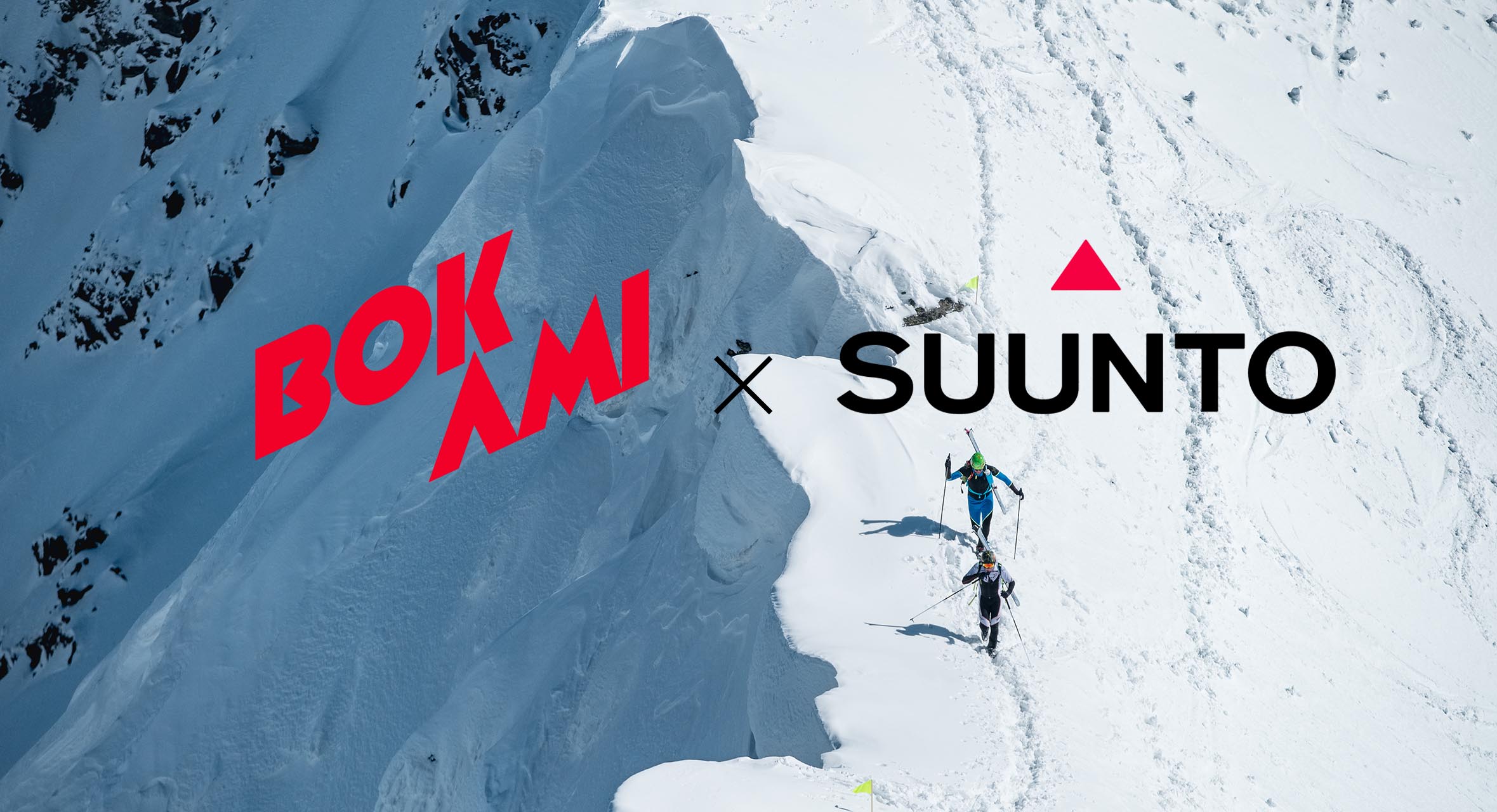
Let's celebrate Suunto and BOKAMI partnership!
We are happy to announce our cooperation with the Boky Západných Tatier organized in Slovakia on March 14-16, of which Suunto is the main partner!
Celebrate this great partnership with us and take advantage of an exclusive 20% promo code on select Suunto products by entering the following in your shopping cart: SUUNTOxBOKAMI.
More details below.
Learn more about the BOKAMI event: Bokami Západných Tatier is a three-day team race held under the auspices of the Slovak Mountaineering Association JAMES. The race follows a long tradition of ski mountaineering races in the Western Tatras that dates back to the early 1990s. It is the only multi-day and at the same time the most demanding ski race in Central Europe, which has gained a reputation in the wider European context.
"BOKAMI" in numbers: 3 days - 3 stages - 3 valleys = 60 km / about 6600 m of elevation gain.
Promotion details:This promotion is active from 14 - 28.03.2024 on Suunto Vertical and Suunto Race products. The promo code is active for the first 1000 users. One user can buy a maximum of 3 products. The promo code can be combined with other discount already displayed at apac.suunto.com. Not cumulative with any other promo code. The promotion cannot be applied to refurbished products and customized products.
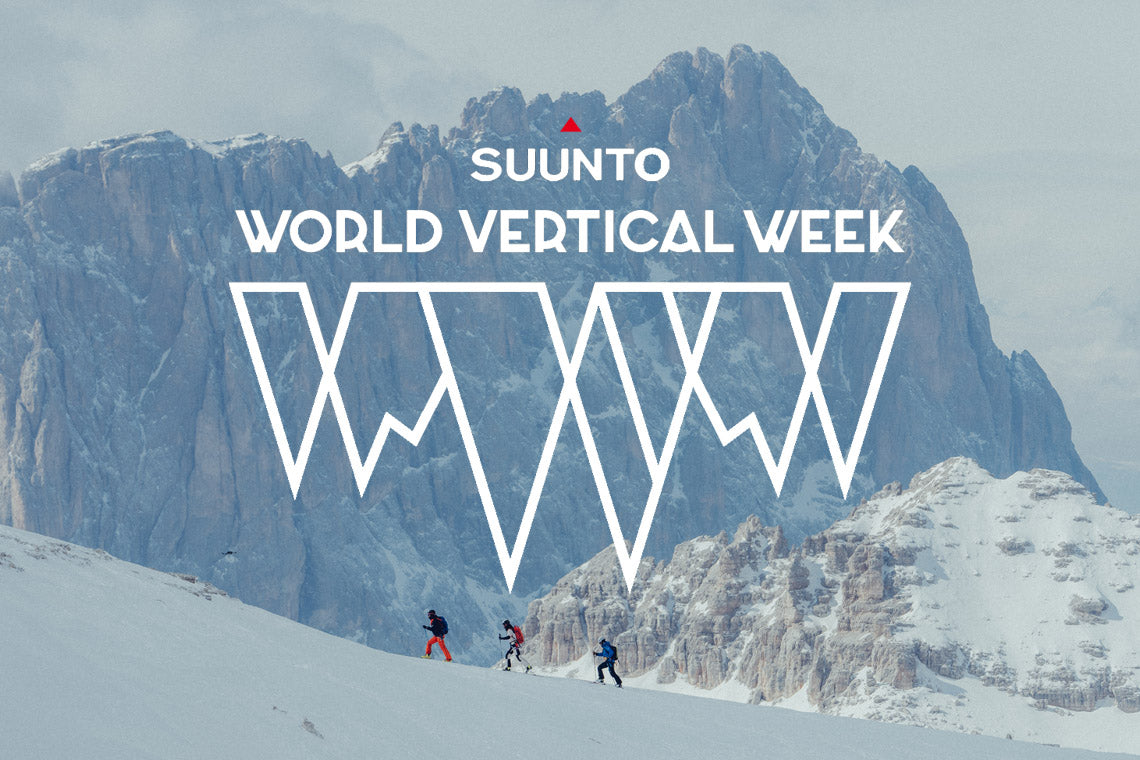
Celebrate the uphills during the 10th annual Suunto World Vertical Week!
Welcome to Suunto World Vertical Week – a thrilling celebration of the uphill challenge! From March 18 to March 24, outdoor enthusiasts from around the globe will unite in a collective pursuit of elevation gain, turning every hill into an opportunity to conquer new heights. The beauty of Suunto Vertical Week lies in its accessibility, taking place everywhere, and embracing all human-powered activities.
Whether you're a trail runner, skier, hiker, mountaineer, cyclist, or any other adventurer, the Vertical Week invites you to climb as much as you can. The ultimate goal? To determine which nation and activity type emerges victorious, boasting the most elevation gain.
Joining the Vertical Week is simple – just open the Suunto app and click 'join' in the Vertical Week message. All your human-powered activities during the week count.
Join now and elevate your adventure!
Follow your progress in real-time
The Vertical Week sport app shows the current activity ascent (top), total ascent (bottom) and your total compared to Vertical Week participants in 2023.
You can follow your total ascent for the Vertical Week with the new SuuntoPlus Vertical Week sport app: The Vertical Week sport app will count every meter you climb and show your cumulative ascent for both the current activity and the entire week. You can also see how high you would be ranked in the previous Vertical Week challenge. Are you already in the top 30% or perhaps even the top 5% of participants?
Go to the SuuntoPlus Store in Suunto app and sync the Vertical Week sport app to your watch. Before starting your first activity of the Vertical Week, select the sport app in the activity settings.
Learn more about SuuntoPlus sport apps.
Join our community events in Innsbruck and Girona
If you are spending your Vertical Week in or around Innsbruck, Austria, or Girona, Spain, you should check out our community events: In Innsbruck we will be running with BASEFIVE on March 18 and skiing on March 20 and 23. In Girona we will go on a community run together with the Overland crew on Saturday, March 23.
Learn more about Suunto x BASEFIVE Vertical Week events in Innsbruck and join!
Learn more about Suunto x OVERLAND Vertical Week events in Girona and join!
Data from previous years
Check out which sports and nations have captured the podium places during the past years. Will this year bring changes to the top places? Now is your chance to affect on this year's results by collecting as many vertical meters as possible.
2023 - 2022 - Summer 2021 - Winter 2021 - 2020 - 2019 - 2018 - 2017 - 2016
Read more
How to use the terrain maps in your Suunto Vertical
10 Suunto features for vertical gain
Suunto World Vertical Week 2023 Big Data
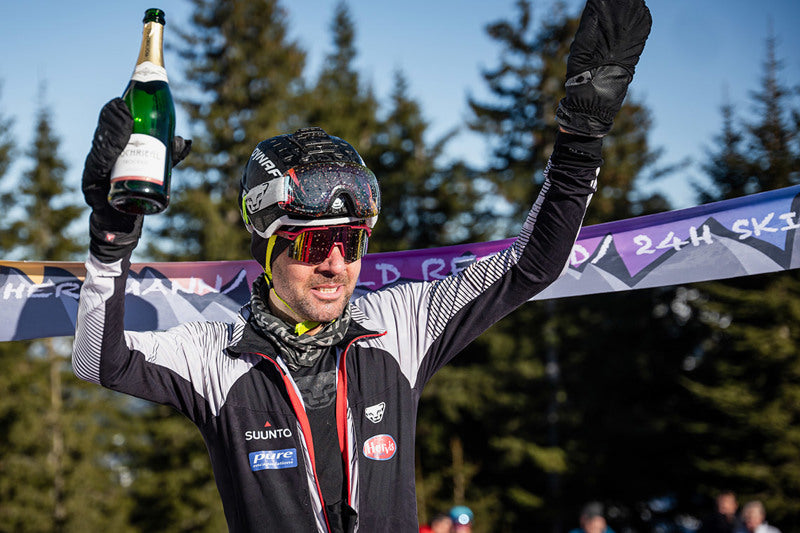
Jakob Herrmann breaks the 24h skimo world record!
Last weekend Jakob Herrmann, Austrian ski mountaineer and Suunto ambassador broke the 24-hour skimo world record. He ascended 24.242 meters (79.534ft) in 24 hours in Radstadt, Austria. To put that into perspective, Jakob’s average hourly ascent was over 1.000 meters, and the total ascent was more than equal to six laps up to Mont Blanc, the tallest mountain in the Alps, from the valley floor in Chamonix.
The previous 24-hour world record was 23.486 meters set by Kilian Jornet. Jakob not only broke the record but was also the first person ever to climb over the 24.000-meter mark.
Jakob skied all together 34 laps up and down a ski slope that has 713 meters of ascent. A single lap was 2,55 km and in total he skied more than 170 kilometers. During one of his descents, he hit a max speed of 108 km/h!
We caught up with Jakob shortly after his record-breaking ski. Read on to learn more!
Suunto: When did you set the 24-hour record as your target?
Jakob: I just love to spend time on my skis for hours! It has always been a dream for me to go on touring skis for 24 hours to see how many meters in altitude I can manage. I just want to know what limits I can reach and how far beyond them I can go.
Did you do some specific training for it?
In November and December, I did a lot of long and easy sessions on my skis followed by short and hard interval sessions to get the speed and strength. In the last two weeks before my 24h I only did short, easy sessions and some short, but hard ones and one race to get used to the suffering!
Have you tried a personal 24h challenge before?
No, but I did one session with 10.000m of ascent in 9h30m in the middle of December. I felt super strong although I did it self-supported. I think with more long sessions my head and muscles would have gotten tired and the pace would have gone down. So, I did more split sessions with 5.000m+ in the morning and a second session in the evening.
How did you pace yourself?
For 90% I listened to my feelings. When I felt strong, I went faster and when I felt tired, I went a bit slower! My supporters always gave me the lap times. In addition, I observed the vertical speed per hour on my Suunto Race.
How did your pace change through the 24 hours?
I did the first loops very fast – my first uphill was in 30’. The first 10 loops were all between 30-36’. After that, I was between 37-40’. My slowest uphill was 42’ on the 24th loop when I had my lowest point. The hardest part for me was the early morning when I felt the freezing cold temperatures of around -8 degrees, especially during the downhills.
In the end, I was able to push again, and the last 7 loops were all between 38-40’. The average was 38’20”. So, I think the secret to my success was that I was able to keep the pace constant.
Did you have some surprises on the way?
I didn’t have any negative surprises – only positive ones! I was surprised that so many friends joined me on my way and so many people followed me on-site or in the live stream.
Did you have anyone keeping you company?
Yes! I was only 7 hours in total alone: 4 hours during the night and 3 hours during the day. I am super happy I had so many friends on my side, but I enjoyed also the loops when I was alone!
When did you realize that you would make it?
From the beginning… No joke! I had a strong day, and after some laps, I knew, that I could do it. After 18h I was 100% sure that I would make a new record, but I wasn’t sure if it would be more than 24.000m. After 21h I was sure I’d do the extra lap to climb more than 24.000 meters.
Which Suunto did you use?
I had the Suunto Race – and it worked perfectly. The battery lasted unbelievably well; I had more than 40% of the battery left in the end even though I had the GPS on the best settings, the light was always on and I used the SuuntoPlus Loop sport app.
What was your nutrition strategy?
100 grams of carbs per hour. I always had 300ml of Maurten Drink Mix320 with me. Every loop I had a Maurten gel and every 4th loop I ate a Moonvalley bar and no gel. After the 8th and 16th loops, I had warm salted potatoes and a warm soup on the top.
For the last 6 loops, I stopped with Maurten Drink Mix320 and Moonvalley bars and changed to Red Bull, water, and Pringles!
Did you have a big crew supporting you?
I had two supporters in the valley and two on the top. Philipp [Reiter] was everywhere taking pictures and pushing me! Also, my parents were nearly 24 hours on my side to give me a good feeling!
How do you feel now, one day after the enormous effort?
I feel super good. My energy and legs are strong – only my feet are swollen, and I have some blisters. I am surprised… but I think my nutrition strategy was really good. I never felt completely out of energy.
Check out Jakob’s record-breaking activity in Strava
Follow Jakob’s adventures on Instagram
All images by Philipp Reiter / The Adventure Bakery






























































